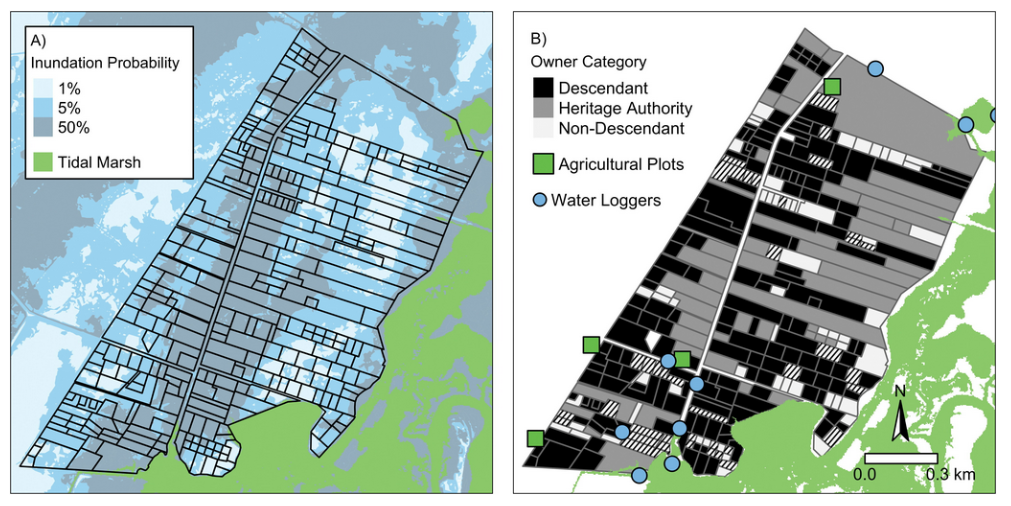by Dean Hardy, Maurice Bailey, and Nik Heynen in the Annals of the American Association of Geographers

Credit: Annals of the American Association of Geographers 2021
Narratives of resilience to sea-level rise too often perpetuate social violence. An abolitionist climate justice praxis necessitates seeing beyond physical inundation to sea-level rise as the sole issue. We argue that sea-level rise is environmental racism, if not always in its racialized outcomes of disproportionate harms, then always in its racialized production of differential value. More than mitigating flood risk when developing Black land futures strategies, to mitigate coastal land loss in the face of rising seas necessitates dismantling “racial regimes of ownership” that are imbued in property relations. Recognizing such, we argue that land futures strategies in the face of rising seas must account for multiple capitalist modes of accumulation but specifically the primitive accumulation process connected to heirs’ property. Here, we argue that racial coastal formations are still underway in how sea-level rise and gentrification are leading to a double dispossession of land and displacing Gullah/Geechee people on Sapelo Island. Although such displacement precipitates loss through harm and violence, in this article we share strategies from abolition ecology praxis to “blockade” these double dispossession processes and, to a degree, even the narrative of loss. To situate the double dispossession narrative within a broader praxis that imagines alternative futures, we till the soil, trace the archives, and tread the marsh and drainage ditches with each other, and in solidarity with other residents, to work toward achieving agricultural revival, property retention, and flood risk mitigation
To learn more, read the whole article.
Tags: abolition ecology, heirs property, Sapelo Island, sea level rise
